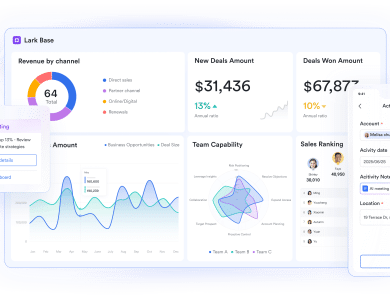A Closer Look at the Four Types of Knowledge Management

In today’s hyper-competitive business environment, understanding and managing the different types of knowledge is pivotal to any organization’s success. Knowledge management enables businesses to capture, distribute, and effectively use knowledge to enhance their processes, innovation, and decision-making. The spectrum of knowledge management comprises various categories, each playing a crucial role in the organizational fabric. As we delve into these categories, the nuances of how they contribute to an organization’s growth become evident. Below, we will dissect the four major types of knowledge management to better grasp their significance and application.
Understanding the Spectrum of Knowledge Management
Knowledge management is an intricate field that combines several disciplines including information technology, business administration, and organizational studies. At its core, it’s a systematic approach to capturing, developing, sharing, and effectively using organizational knowledge. Across this spectrum, the four predominant knowledge management types, each serve a unique function in the corporate ecosystem, enabling companies to leverage their collective intelligence and enhance performance.
The importance of knowledge management cannot be overstated in an era where information is both abundant and a key competitive differentiator. By fostering knowledge creation, sharing, and retention within an organization, it ensures that each team member has access to the insights and information necessary for optimal performance. Navigating the complex domains of knowledge types thus becomes a strategic priority for businesses aiming for excellence.
Tacit Knowledge: The Unseen Driver of Innovation
Tacit knowledge is often described as knowledge that is difficult to transfer to another person by means of writing it down or verbalizing it. It includes personal wisdom, experience, insight, and intuition that employees carry within themselves. This type of knowledge can be a source of competitive edge but is notoriously difficult to manage because of its intangible nature.
Innovation often thrives on tacit knowledge because it involves exploring the unknown and relying on the instincts and expertise that employees have developed over time. It is the subtle cues, the “know-how” that cannot be captured in a manual, which propels forward-thinking solutions and creativity within a company.
Explicit Knowledge: The Tangible Assets of Your Organization
Explicit knowledge stands on the other end of the knowledge spectrum. This is the type of knowledge that is easily expressed, documented, stored, and accessed. It encompasses data sets, manuals, procedures, and documents that can be readily transmitted across the organization.
With the availability of advanced document management systems and databases, managing explicit knowledge has become more efficient. Organizations leverage these digital solutions to ensure explicit knowledge is systematically organized and disseminated, creating an accessible knowledge base for employees.
Though managing explicit knowledge is less challenging than its tacit counterpart, it requires constant updates and governance to ensure relevance and accuracy. Periodic reviews and audits are vital to keep explicit knowledge resources current and beneficial for ongoing and future projects.
The Strategic Role of Embedded Knowledge in Processes
Embedded knowledge is ingrained within an organization’s practices, processes, and products. It is the knowledge that resides within systems, routines, and artifacts that define how an organization operates on a day-to-day basis. This knowledge type tends to be taken for granted, yet it is vital for consistency and efficiency of operations.
One of the most significant advantages of embedded knowledge is that it does not rely heavily on any individual. Instead, it is built over time through the collective experiences and practices that become codified within the organization. Such embedded knowledge can include proprietary methodologies, unique product designs, or tailored customer service processes.
Leveraging Cultural Knowledge for Organizational Growth
Cultural knowledge constitutes the norms, values, beliefs, and attitudes that permeate an organization. It shapes how employees interact with each other, make decisions, and approach their work. Given its all-pervasive nature, cultural knowledge is one of the most influential yet subtle forms of knowledge within an organization.
Effective management of cultural knowledge involves nurturing a workplace environment that reflects the organization’s core values and encourages behaviors aligned with its mission and goals. Leaders play a pivotal role here, demonstrating desired behaviors and fostering a culture of openness, trust, and continuous learning.
Organizations that successfully leverage cultural knowledge can achieve higher levels of employee engagement, better teamwork, and enhanced innovation. Essentially, cultural knowledge becomes the bedrock for a strong organizational identity and can serve as a powerful unifier and motivator for the workforce.
Overall, each type of knowledge management plays a crucial role in sustaining and growing a business in today’s highly competitive landscape. By recognizing the unique characteristics and functions of tacit, explicit, embedded, and cultural knowledge, organizations can devise strategies to manage these resources effectively, leading to increased innovation, efficiency, and alignment with their strategic objectives.




